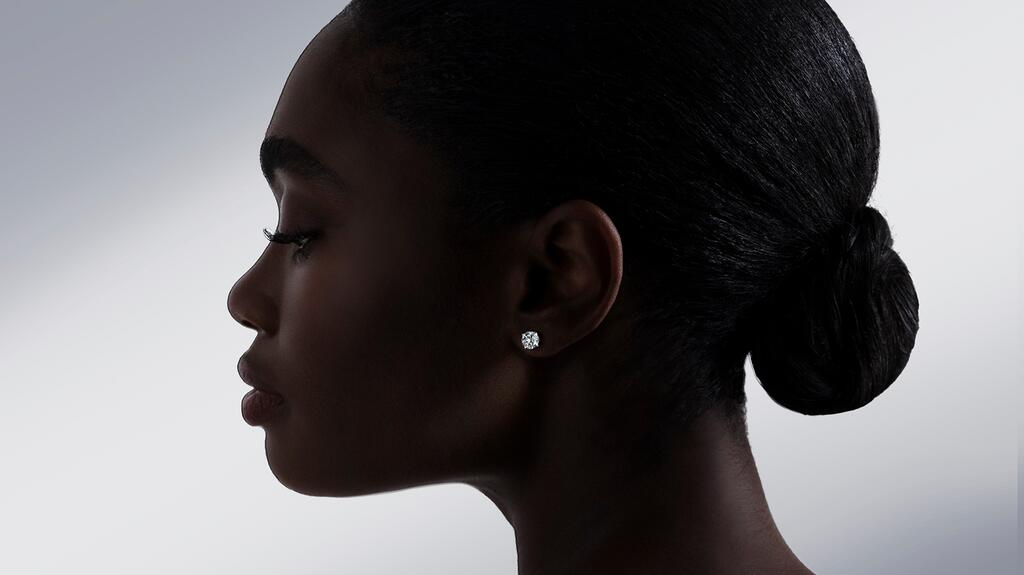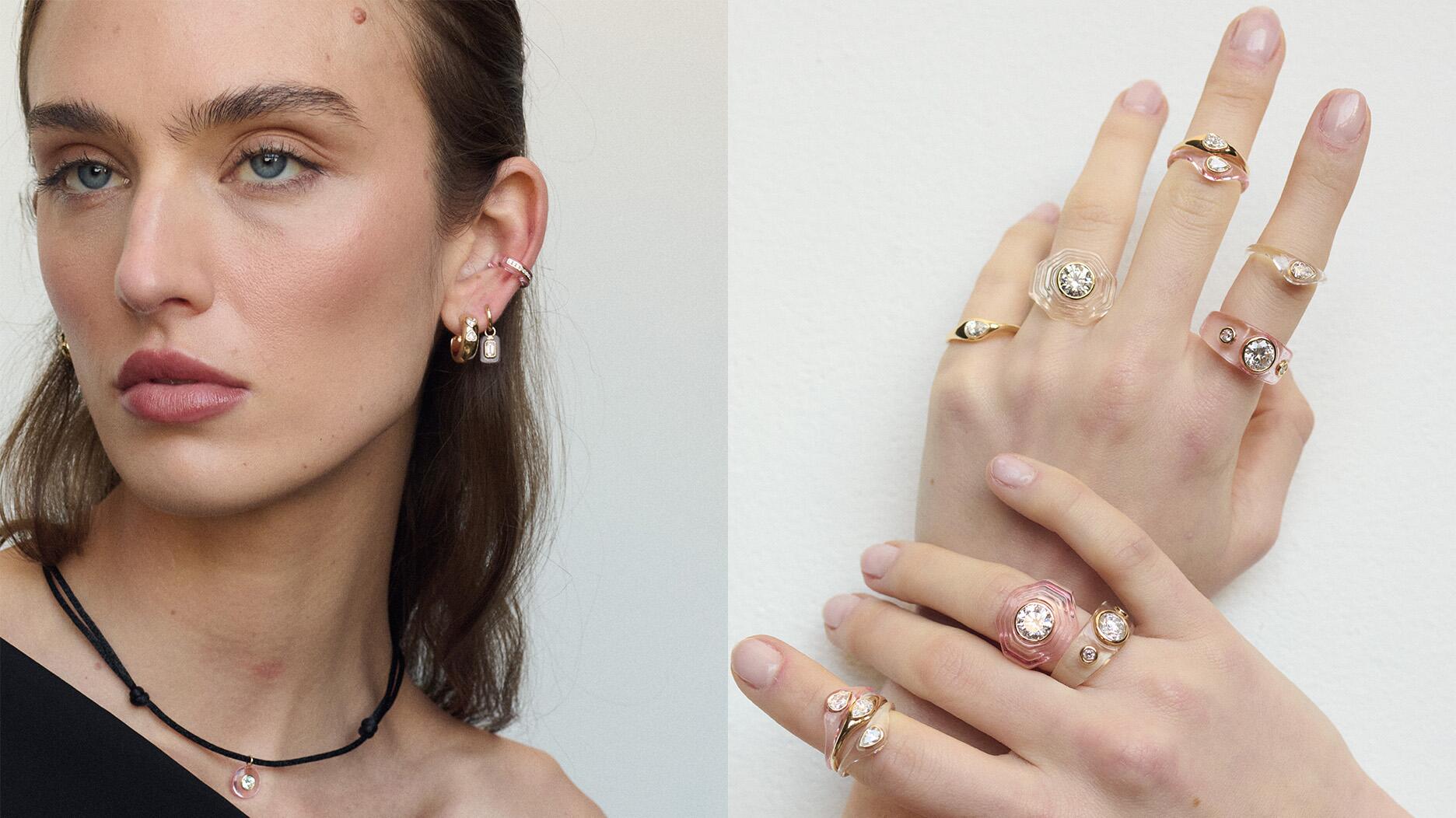Lightbox Goes Larger With 2-Carat Lab-Grown Diamonds
The De Beers-owned brand also debuted a new category of high-quality lab-grown stones called “Finest.”

The De Beers-owned brand announced an expansion to its offerings to include sizes up to and including 2 carats.
The pink, blue, and white lab-grown diamonds will still be priced at $800 per carat, as has been Lightbox’s structure from the start.
The brand said it expects to add stone cuts and jewelry silhouettes in 14-karat gold early next year.
Concurrent with the news of the larger sizes, Lightbox also introduced “Finest,” a proprietary diamond engineering process developed by the brand that combines its existing CVD synthesis technology with a “further leading refinement” to enhance the stones’ color.
“Finest” stones are VVS clarity, colorless (D, E, or F in color), and have an excellent cut.
Lightbox said the same technique is also applied to fancy color diamonds in the range, refining the saturation and consistency of the blue and pink lab-grown stones.
Each “Finest” diamond will be laser-inscribed with a unique quality mark just under the table, invisible to the naked eye but visible with a 10X loupe.
Each stone also will come with its own “quality guarantee” detailing its cut, color, and clarity, which Lightbox said serves as its warranty for customer assurance.
Pricing for "Finest” follows a linear model like the one already set by Lightbox, with 1-carat stones priced at $1,500 plus the cost of setting.
It will only offer “Finest” stones up to 1 carat in size to be consistent with its belief that “the real, long-term opportunity for lab-grown diamonds is in accessibly priced jewelry at or below $2,000,” Lightbox said in a release.

The “Finest” range includes pink, blue, and white lab-grown diamonds available in pendant and earring styles in 18-karat gold.
Originally slated to launch in 2022, the introduction of the 2-carat offerings from Lightbox and “Finest” were accelerated by the opening last fall of Lightbox’s $94 million, 60,000-square-foot manufacturing lab in Gresham, Oregon.
They will launch in late October on the Lightbox website followed by a broader rollout to both brick-and-mortar and online retail partners early next year.
“Our incredible team continues to push the boundaries on lab-grown diamond engineering technology, and thanks to our 50 years of experience, pioneering approach, IP portfolio, and state-of-the-art manufacturing facility in Gresham, we have the capability to now take the next steps in expanding our lab-grown diamond product range to include stones of larger size and even higher qualities,” said Lightbox CEO Steve Coe.
“This enables us to bring our fair and transparent linear pricing model to lab-grown diamonds up to 2 carats in size and offer superior value to our customers over an extensive range of stone sizes and qualities. For size, quality and pricing, Lightbox is leading the way.”
The Latest

The luxury goods company said founder Ippolita Rostagno will remain at the brand’s helm.

Laura Burdese, who joined the Italian luxury brand in 2022, will take on the role in July.

The National Jeweler editors revisit the most noteworthy industry happenings and design trends from 2025.

How Jewelers of America’s 20 Under 40 are leading to ensure a brighter future for the jewelry industry.

Need a gift for the cat lover who has everything? Look no further than our latest Piece of the Week.


It purchased the “Grosse Pièce,” an ultra-complicated Audemars Piguet pocket watch from the ‘20s, for a record-breaking price at Sotheby’s.

Chandler got his start at Michelson Jewelers and has served as DCA president and CEO since 2001. He will retire at the end of the month.

Roseco’s 704-page catalog showcases new lab-grown diamonds, findings, tools & more—available in print or interactive digital editions.

The boutique is slated to open this week inside Terminal 8, offering pre-owned Rolex watches and more to international travelers.

Sponsored by Digital Monitoring Products

The special-edition egg pendant ingested in a New Zealand jewelry store was recovered after a six-day wait.

Associate Editor Natalie Francisco plays favorites with Piece of the Week, selecting a standout piece of jewelry from each month of 2025.

The “Love and Desire” campaign is inspired by the magic that follows when one’s heart leads the way, said the brand.

Two awardees will receive free tuition for an educational course at the Swiss lab, with flights and lodging included.

Berta de Pablos-Barbier will replace Alexander Lacik at the start of January, two months earlier than expected.

Sotheby’s held its first two jewelry sales at the Breuer building last week, and they totaled nearly $44 million.

Winners will receive free registration and lodging for its fourth annual event in Detroit.

Here are six ideas for making more engaging content for Instagram Reels and TikTok, courtesy of Duvall O’Steen and Jen Cullen Williams.

The honorees include a notable jewelry brand, an industry veteran, and an independent retailer.

Carlos Jose Hernandez and Joshua Zuazo were sentenced to life without the possibility of parole in the 2024 murder of Hussein “Sam” Murray.

Yood will serve alongside Eduard Stefanescu, the sustainability manager for C.Hafner, a precious metals refiner in Germany.

The New Orleans jeweler is also hosting pop-up jewelry boutiques in New York City and Dallas.

Set in a Tiffany & Co. necklace, it sold for $4.2 million, the highest price and price per carat paid for a Paraíba tourmaline at auction.

The jeweler’s “Deep Freeze” display showcases its iconic jewelry designs frozen in a vintage icebox.

Take luxury gifting to new heights this holiday season with the jeweler’s showstopping 12-carat sphene ring.

This year's theme is “Unveiling the Depths of the Ocean.”

In its annual report, Pinterest noted an increase in searches for brooches, heirloom jewelry, and ‘80s luxury.




























